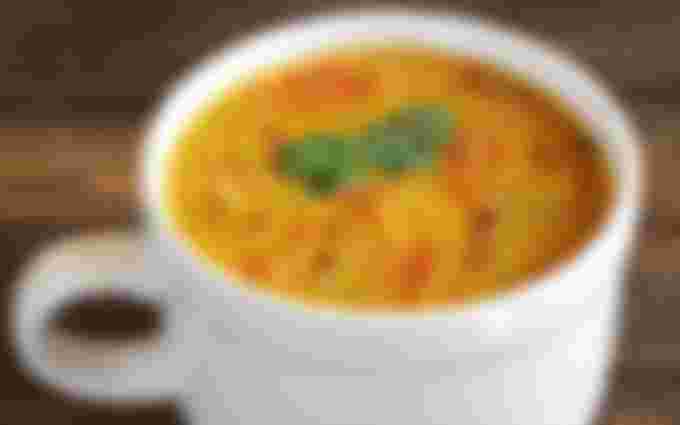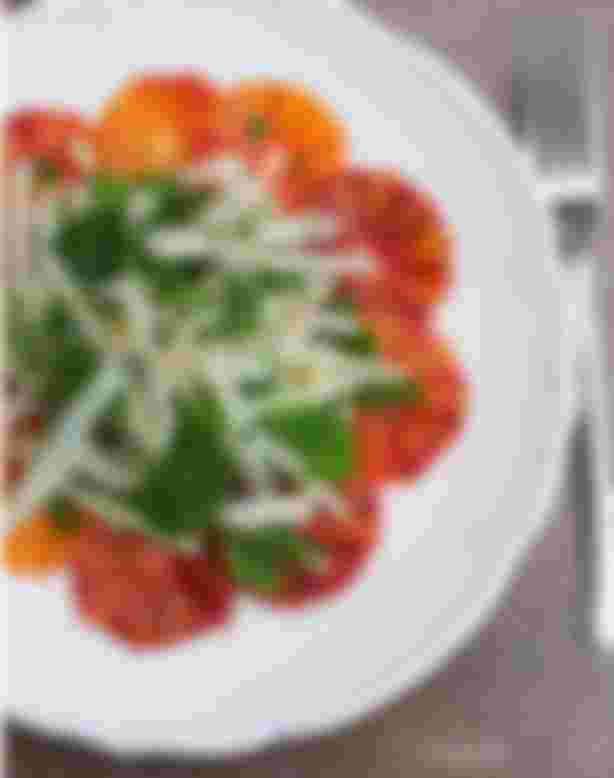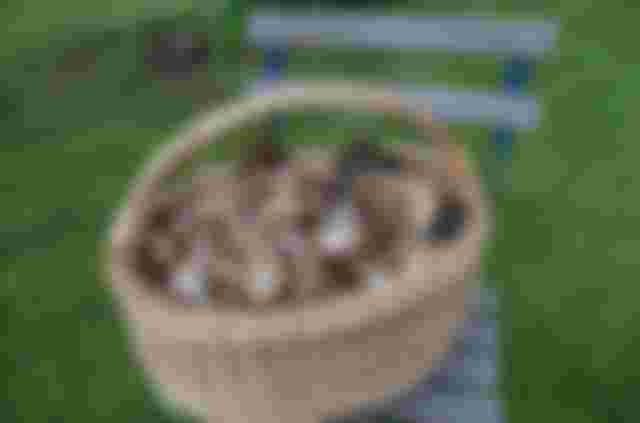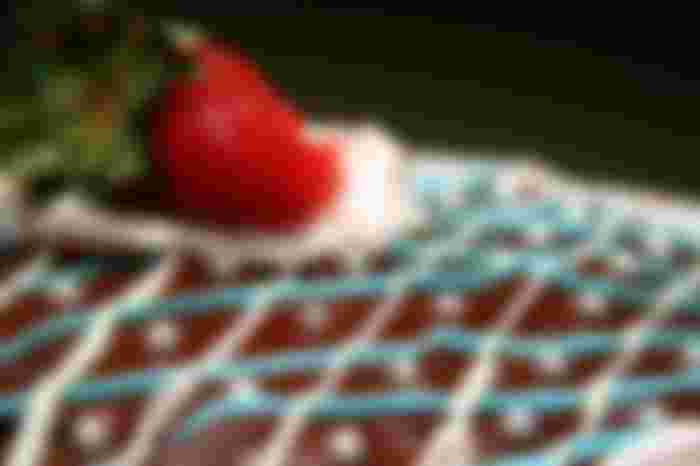Are you learning to cook? Do you watch cooking shows or read food blogs and see cooking or culinary terms that you are not familiar with? This article is for you.
Cooking Terms From A to C
1) arrowroot
2) aspic
3) au gratin
4) canapé
5) capers
6) cornichons
7) crudité
♦ Arrowroot is a thickening agent, used much like cornstarch, potato starch, etc.
♦ Aspic used to be popular; circa 1950. The definition from the dictionary says “a savory jelly made with meat stock, set in a mold and used to contain pieces of meat, seafood, or eggs.”
What Is Aspic Jelly and How Is It Used? by Danilo Alfaro ~ “Aspic, is savory meat gelatin made from consomme, clarified stock, or bone broth. It gets its jiggly texture when the consomme cools.”
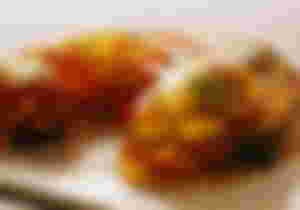
♦ Au gratin (or “gratinée”) is a French cooking term. Everybody wants to eat like the French! Especially when the term simply means a cooking technique where breadcrumbs or grated cheese or both are sprinkled on top (of whatever the food is … potatoes, cauliflower, etc.) and browned. The French verb “gratiner” translated into English is “to brown.”
♦ Canapé. When you say this word, some think finger foods or appetizers; some say hors d’oeuvre, and some clarify by saying it’s a type of hors d’oeuvre. Still, others say it’s that fun food they serve at happy hours. The canapé had a humble beginning.
♦ Capers are often used in Italian food. They come from a plant that grows in the Mediterranean region. Its unopened flower buds or capers are pickled or salted and used in relishes, sauces, etc. How to grow, pick and preserve capers. Historical records of ancient civilizations indicate they were used in cooking and for medicinal purposes.
♦ Cornichons (pronounced: KOR-nee-shons). In America, we have little pickles called gherkins. In France, the French word for gherkins is “cornichons”: a small tangy, tart or sour (depending on your tastebuds) pickled cucumber that is seasoned with tarragon.
♦ Crudité. Heard this term used by the diva Martha Stewart on one of her cooking shows. She said she was making a platter. Basically, it’s a platter of raw vegetables. It is a French term that means “rawness”.

Cooking Terms From D to I
8) dredge
9) fine herbes
10) flambé
11) fricassée
12) gazpacho
13) Indian tempering
♦ Dredge basically means coat the food with flour or breadcrumbs before cooking it; usually before deep-frying or sautéeing. That’s it! Nothing glamorous.
♦ Fine Herbes. The hallmark of French cuisine is the use of a special herb blend known as Fines Herbes (pronounced feen airb). If you are a newbie cook, you can be bold and create your own seasoning mix or …? Or you can purchase these herbs premixed from the store or grocery shop online. The French use this blend to season everything from omelettes to meatloaf. Let master chef Jacques Pépin show you how to prepare a proper omelet with fine herbes. The herbs are parsley, chives, tarragon, and chervil. It must be these 4 herbs! It’s tradition! Since the 17th century.
♦ Flambé. Have you ever been to a fancy restaurant or watched a cooking video or TV show and you see the chef set a dish on fire!! Impressive huh? That technique is called flambé. You douse the food in some kind of liquor or some other drinkable alcohol. The flame burns for a little while and then it goes out. Just in case you don’t know what you’re doing, keep a fire extinguisher nearby. LOL.
♦ Fricassée. Do you know what it means to “braise”? Braising is when you fry the meat lightly and then stew it slowly in a closed container. “Fricassée is a method of cooking meat in which it is cut up and braised, and served with its sauce …” (Wikipedia) Chicken Fricassée in French is Fricassee de Poulet a L’Ancienne. Much like chicken soup is the food most American mothers and grandmothers know how to make, chicken fricassée is a meal most French mothers and grandmothers know how to make. Martha Stewart is not French but she the diva of all American TV chefs and she has a great recipe for this dish. If you’re vegetarian there is also a mushroom fricassée recipe. Every beginning cook should learn how to make this one-pot meal.
♦ Gazpacho. When you hear the word gazpacho it sounds exotic. But when it’s described as cold soup, it doesn’t really sound very appetizing. It originated in Andalusia, southern Spain. The recipe today includes tomatoes. But the ingredients for the original recipe were bread, garlic, oil, vinegar, and salt. It was food eaten by the poor. But the recipe people refer to today as “classic” or “authentic” contains: tomatoes, cucumber, green bell pepper, crusty bread, red onion, garlic, olive oil, sherry vinegar, ground cumin, salt and black pepper. Different areas of Spain, and in fact, different individuals in any part of the world vary or customize this cold soup recipe to suit their liking.
♦ Indian Tempering. The definition of this cooking method includes two words that scare people away. “Hot fat”. It might be a hard sell but tempering actually helps to unlock the healing properties in spices. It is a technique used in Indian cuisine. Whole spices or ground spices are heated in hot oil or ghee and the mixture is added to the dish. It makes the foods healthful and flavorful.
What is Tadka? It's the Indian Tempering Trick That Will Transform Your Cooking ~ In an interview on a talek show, the popular Indian actress Priyanka Chopra-Jonas once said “I'm Indian. It's all about the spices.” For sure. Ever hear the word “tadka”? It is an Indian cooking technique that is centuries old and it is why Indian food is marvelously spicy and aromatic.
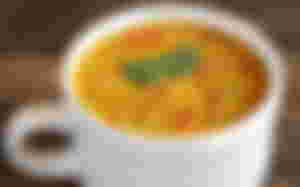
Cooking Terms From K to M
14) kohlrabi
15) kosher
16) madeira
17) mei yen seasoning
18) meunière
19) morel
♦ Kohlrabi. Do you love turnip or cabbage? Then if you have not tried kohlrabi yet, when you do try it you will probably love it! Some call it a German turnip. This cruciferous vegetable is being described as “trendy”. In my experience when I see the word “trendy” it usually means people are just now finding out about something that’s been around for ages. For example: Matcha tea. Remember when it became all the rage or “trendy” in America? But the Japanese have been drinking matcha tea for centuries. Health officials say kohlrabi promotes a healthy gut and can lower the risk of heart disease. It’s a source of vitamin C and also rich in vitamin B6. This root vegetable has numerous health benefits. You can prepare kohlrabi raw in a slaw or cooked in a stir-fry or roasted. You can even make into a healthy cocktail drink. There are so many wonderful recipes.
Kohlrabi and Blood Orange Salad (or any orange you fancy!) ~ “Super quick, super easy and super good for you! Chock full of vit C from the oranges and the kohlrabi.”
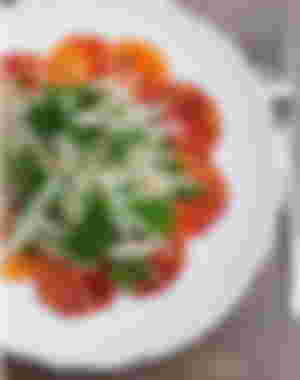
♦ Kosher. When you hear the term kosher, you think of Jewish food. Jews who “keep kosher” adhere to strict dietary laws prescribed in Jewish scriptures. People who are not Jewish are also more than happy to enjoy kosher food. I grew up in Miami, Florida and there was a Jewish deli I frequented for lunch that served nothing but kosher meats. The sandwiches were amazing! My Jewish Learning is one of my favorite websites. AT this site you can read a detailed article on kosher food: Kosher Food: What Makes Food Kosher or Not | My Jewish Learning.
♦ Madeira. “Madeira is a fortified wine made on the Portuguese Madeira Islands, off the coast of Africa.” (Wikipedia) Did you know that America’s first president, George Washington, was very fond of Madeira wine? Just a fun food fact that turned up during my research on this food term. It’s a dessert wine. It is also considered a medicinal wine. Would you like to know more about Madeira wine? It so happens Karen Frazier, CWAS, published an article in Love to Know, a lifestyle site that circulates articles on a wide range of topics. There is a section dedicated to nothing but wine articles. What Is Madeira Wine?
♦ Mei yen seasoning. Mei yen seasoning or powder is a blend of seasonings used in oriental cooking. At one time it was sold under the brand name Spice Islands but the company discontinued the product. The recipe was made available to the public. Why do you suppose people clambered for this exotic powder? Nobel Prize winning author Ernest Hemingway liked his burgers seasoned with mei yen powder. Well! If it’s good enough for Mr. Hemingway then the Mei Yen Seasoning Recipe is a must-have for all burger lovers. Right?
♦ Meunière. When you hear Martha Stewart use a word your ears perk up. Because you know that right after she says it she explains what it means in plain mundane terms. Dredged in flour and sauteed with butter? Why say all those words? Just say à la meunière. It sounds so much better in French. The English translation is “miller’s wife”. This cooking technique is used mainly for fish.
♦ Morel. Morel is an edible fungus, a wild mushroom, and gourmet chefs love it!
Everything You Ever Wanted to Know about Morel Mushrooms! | Untamed Feast
12 Tips for Finding More Morel Mushrooms This Spring | Outdoor Life

Cooking Terms From P to Z
20) profiterole
21) silver dragées
22) steep
23) truss
24) water bath
25) zabaglione
♦ Profiterole. A profiterole is a small cream puff, served as an appetizer, hors d’oeuvre or dessert. It can be filled with a sweet or savory mixture. Although most people prefer the sweet. One chef made the cream filling with passion fruit. People find many reasons to serve a profiterole. It could show up as desert on a table set for Ramadan. For sure they will show up during the Christmas holiday season. Several could be placed on a plate, each one with a candle and used to celebrate a birthday. It’s not required but for the sweet profiterole, people love to cover them in chocolate. No worries. You can make them gluten-free.
♦ Silver dragées. Silver dragées? No. They are not silver baby dragons. But a good fantasy writer could work with that idea. They are candies. And evidently a good cook or chef already worked with the idea. That’s why we know of tiny ball-shaped silver colored candies that are called silver dragées. These treats also used to show up around Christmas time. Used to. But no more. Well! They show up but with a warning.
FOOD WARNING!! The US FDA banned silver as a food coloring additive.
What??!! When?? Uuhh … it’s been banned since 1906. But just in case you weren’t in the information loop, you can read all about it at Silver sprinkle dragees are not safe to eat, says FDA | Today.com.
So! Even though they are not baby dragons who will grow up to become big dragons … BEWARE OF THE DRAGÉES!! It's really too bad. Those silver balls make sweet treats look so pretty!

♦ Steep. Anybody who drinks tea knows what “steep” means. Nevertheless, there is a food blog I frequently visit for all kinds of information on cooking techniques and for recipes, etc. So in this article, this cooking term is being used an an excuse to direct you, the reader, to this marvelous website. If you are a loyal food blog reader you probably have already visited. If not, then per Spruce Eats, the definition of steep is “To allow dry ingredients, such as coffee, tea, or spices, to soak in a liquid until the liquid takes on the flavor of the dry ingredient.” That’s plain enough. If you’re preparing a dish or a drink and you see the word “steep” … you know what to do.
♦ Truss. Ever watch a chef preparing poultry or a roast and they take a string or twine along with some scissors and tie up the meat! The correct cooking term for that activity is “truss”. No fuss. Just truss. According to Food & Wine you can use dental floss to truss. No really! There’s a video where the chef is teaching you how to do that.
♦ Water Bath. Water bath is a French culinary cooking term and it sounds so much nicer when you say it in French. Bain-Marie (pronouced ban-ma-ree). If you’re cooking, doesn’t that sound much nicer than “water bath”? A water bath, is not be confused with an ice bath, even though both cooking techniques use water. An ice bath is intended to stop the cooking. A water bath is used to gently cook a certain food.
“Some foods require moisture in the oven, as well as a milder heat source than the direct heat of the oven, such as custards, puddings, and cheesecakes. … So, what's a water bath? It's just a pan of water placed into an oven. The hot water provides a constant, steady heat source and ensures even, slow cooking for recipes that call for a water bath.” ~ What is a Water Bath? | HowStuffWorks
♦ Zabaglione. Zabaglione is a dessert and it’s made with wine and beaten eggs. I often hear the chefs say when they’re cooking a dish “If you don’t want to use wine (or liqueur), just use broth.” That substitution rule does not apply when making Zabaglione. You either use wine or opt for a different dessert. It’s Italian so I’m sharing the cooking video of one of my favorite YouTube chefs, Laura Vitale. She described this dessert as halfway between a pudding and a mousse.
How to Make Zabaglione | Episode 1038 | Laura in the Kitchen

That's it my dear newbie cooks and chefs. Hope you learned something of value that will make you the king or queen of your kitchen. If you used any of these cooking techniques to make a dish, let me know in the comments. Happy cooking!
● ● ●
More Read.Cash articles in My Foodie Luv series
More fun foodie posts on Noise.Cash
MY FOODIE LUV CHANNELS ON NOISE.CASH:
Recipe Sharing : My Foodie Luv ~ Cooking is about enjoying food & sharing recipes so dishes can be enjoyed again & again.
Herbs and Spices : My Foodie Luv ~ Experiment with various herbs and spices and create culinary delights everyone will praise!
♦ ♦ ♦



